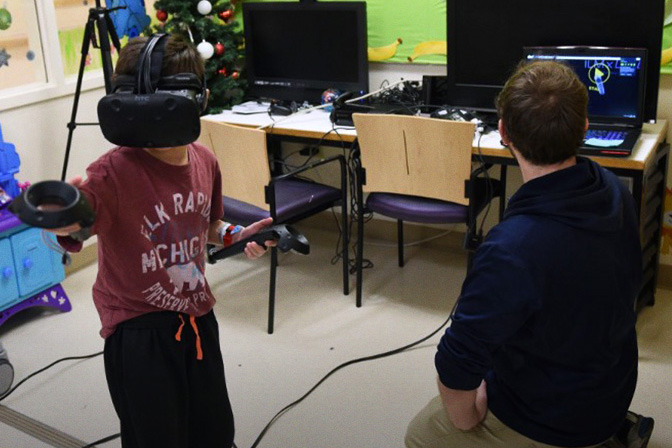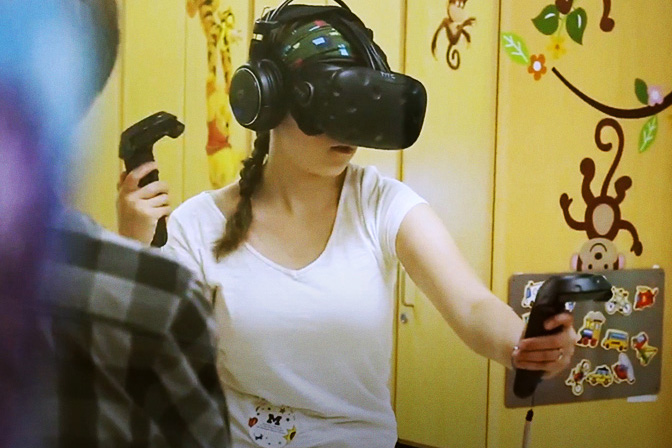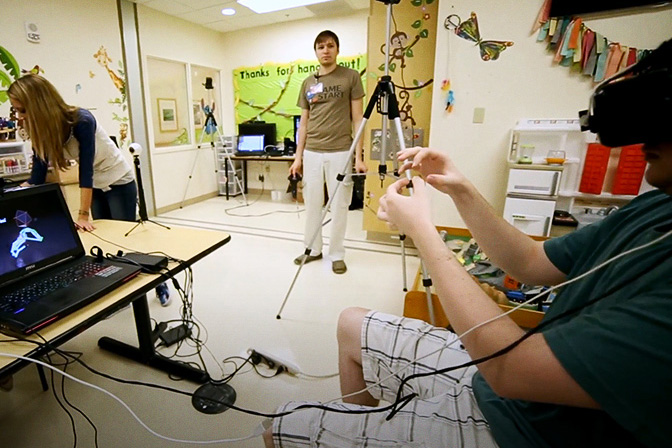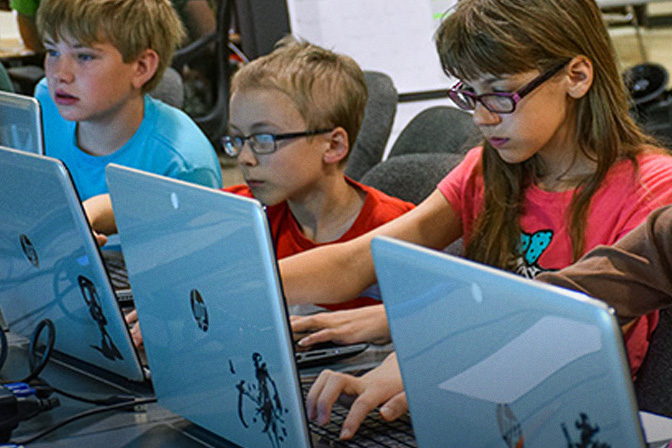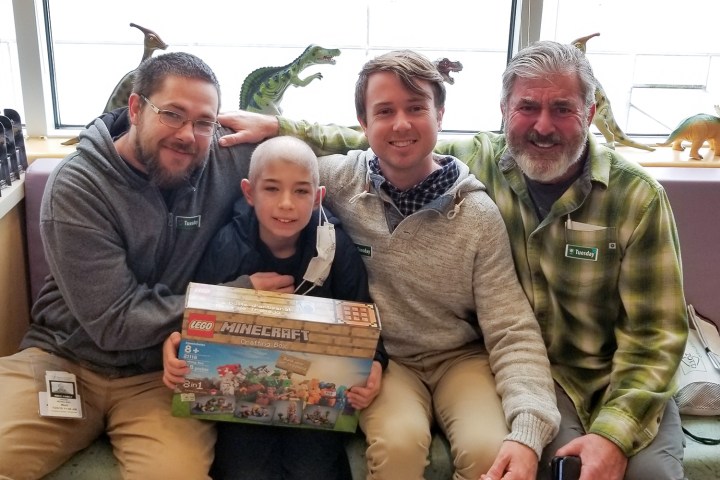
Taylor Carol was diagnosed with Philadelphia Chromosome-Positive Acute Lymphoblastic Leukemia, commonly shortened to ALL Leukemia, in May of 2006. He wasn’t expected to survive.
What followed was five years in and out of hospitals. Taylor’s longest stay, a full year at Seattle Children’s Hospital, was mostly spent in an isolation unit. His life was saved by an experimental bone marrow transplant. Though he survived the transplant, it was no miracle cure. It came with months of recovery and a running battle against graft-versus-host disease, a condition where donated marrow attacks the recipient’s body.
It was a harrowing five years for Taylor and his family, but he came to see himself as lucky in one small way – he owned a Nintendo DS. The portable game console was not just entertainment. It offered mental stimulation and a distraction in hospitals that were otherwise lacking in both. Taylor soon realized, though, that many children he met during his hospital stay weren’t so lucky. Most couldn’t afford a Nintendo DS or any other game console. They needed ways to play, like any other kid, but both illness and recovery forced them apart from their peers, and in some cases, even their family.
Taylor wanted to help, and he had insider access to someone who could advise him. His father, Jim Carol, was already a veteran of Silicon Valley. He spent eight years at Hewlett-Packard in the 1980s and early 1990s, then moved on to be a VP of Sales and Marketing at Motorola. He left that job to co-found PacketVideo, a mobile video startup, in 1998.
Using his past experience and connections, Jim helped put together a plan that would bring video games to hospitalized kids who need them. In 2007, while Taylor was still fighting cancer, the father-son duo founded Gamechanger, a charity that would make their dream a possibility.
From garage start-up to worldwide charity
The charity’s work began after Taylor returned from Seattle Children’s Hospital to the family’s home in Dana Point, California. Jim used his years of expertise and connections to reach out to tech and gaming giants like Microsoft, Sony, and Nintendo.
“I saw in 2007 that Gamestop made two billion profit off used video games,” Jim explained. “So I was like oh, ok, we’ll collect old used video games, and I’ll donate my stuff. And we’ll just start.”
Surprisingly, the charity’s beginning proved that simple. Jim sent out requests for old, obsolete, or unneeded gear, and companies were often happy to oblige. Many had exactly what the charity needed; demo units, out-of-date hardware, and overstock goods wasting space in offices and warehouses. Donations rolled in, and the Carols quickly realized they were onto something.
“We started in our small garage,” said Taylor. “Within a few months, we filled our entire garage, which we loved, but understandably mom was a little pissed about it. Having a garage full of used Nintendo 64s was every 13-year-old boy’s dream, and every mother’s nightmare!”
The charity operated out of the garage for only a year before moving on to a small warehouse, which quickly lead to an even larger warehouse. Gamechanger now has two warehouses in southern California filled not only with hardware and video games, but also toys connected to game franchises. Minecraft LEGO sets and Rocket League-themed Hot Wheels cars are among the popular gifts.
“Having a garage full of used Nintendo 64s was every 13-year-old boy’s dream, and every mother’s nightmare!”
Gamechanger has grown into a worldwide charity. It operates in 11 countries, helps an estimated 20,000 people a year, and has partnerships with other game-centric charities including Child’s Play, Gamers Outreach, and Able Gamers. The charity has gifted nearly $16.5 million dollars of gifts and scholarships since its inception.
Using Jim’s experience to connect with donors gave the charity its start, stocking it with gifts that could make their way to the kids who’d benefit from them the most. That was already more than the Carol family anticipated when Gamechanger started its mission in 2007. It was also only the first stage in the charity’s growth. The next, larger leap forward came alongside the explosive growth of an entirely new media platform: Twitch.
Bridging the gap between charities and gamers
Jim heard of Twitch from Jeff Hemenway, a Vice President at Unity Technology, the company behind the well-known Unity video game engine. Mr. Hemenway knew Andy Swanson, then the VP of Sales of Twitch, which at the time was still an independent company (Amazon bought Twitch in August of 2014).
It was a natural partnership from the start. Jim’s background co-founding PacketVideo gave him the insight to recognize Twitch was destined to become a major force in online media, and Andy Swanson understood how streaming could improve the lives of sick kids isolated in hospitals. Jim also recognized that, to the kids Gamechanger sought to help, streamers were often bigger stars than the athletes and actors charities had partnered with in the past.
“Most charities have no idea. They don’t know who iHasCupquake is, or LDShadowLady, or ParkerGames, Jacksepticeye – they never heard of these people,” Jim told Digital Trends. “But these are the people that we love, that you guys love, that the kids love.”
More importantly, streamers often find it easier to engage directly with the children they want to help. They’re typically only a handful of years older. They know the same games, make the same jokes, like the same shows. That means a connection far more real than children could hope to form with a celebrity.
Streamers were often bigger stars than the athletes and actors charities had often partnered with in the past.
Steamers are also willing to attend events that team up a streamer with a child Gamechanger wants to help. Taylor recalled one event, a Minecraft fundraiser, where streamers and kids paired up to survive a Hunger Games-style tournament. “They went in, people could do stream donations to influence what happened, and so on,” Taylor said. Fundraising charity events are nothing new, but Twitch made it possible for everyone to participate together. It doesn’t just raise money. It raises the spirits of the every kid who takes part.
Gamechanger’s success on Twitch has been a team effort. The charity relies and thrives on help and engagement from the community, and its help has impressed Carol immensely. “The gaming community just overwhelmed us,” Jim Carol told Digital Trends. “They had so much untapped potential for good, and I think they still do.” The charity is now expanding its partnerships. You may have noticed the Gamechanger logo appear on a recent Steam sale, alongside the Humble PlayStation Indie Bundle.
Virtual reality means guaranteed smiles
Gamechanger’s wants to bring joy to the lives of children in hospitals across the world, but technology is the medium used to do it, and the charity is constantly looking for new ideas. Twitch is one example. Virtual reality is another.
VR’s had a rough go so far. Gamers haven’t lined up to buy headsets. Still, no one denies its potential for immersion, and that potential is fully realized when a child in a hospital puts on a headset. The transformation was plain to see during the Gamechanger event at Doernbecher Children’s Hospital in Portland, Oregon.
Last week, our co-founders Jim and Taylor paid a visit to Portland to lift spirits, bring the smiles, and celebrate a few very special doctors who continue to save and change lives every day.
Thank you everyone for making this possible.#DeliveringHope 🚚💚 pic.twitter.com/Y84zaLCWjN
— GameChanger Charity (@GameChangerOrg) February 25, 2019
Children flocked to all the games brought to the event, but a VR headset paired with a racing wheel easily hogged the attention. A smile instantly appeared on the face of every kid who strapped in, and the other children in the room constantly looked over with fascination — and maybe a little jealousy – even while playing other games.
Doctors have noticed the entrancing effect VR can have, and they’re interested in using it to better treat patients or, at least, make a hospital stay more comfortable. “It’s having an incredible impact in the distraction therapy space, using VR to minimize pain. Hospitals are really starting to realize the potential there,” Taylor said.
“We’ll gift a VR kit to a patient whose gone on hospice […] ask them to create their wishlist of things they wanted to do or see.”
VR’s potential is especially high in hospice care. Patients often want to fulfill their last wishes, but they typically can’t leave the facility. “We’ll gift a VR kit to a patient whose gone on hospice, get them set up, even in certain instances ask them to create their wishlist of things they wanted to do or see,” said Taylor. “Even if they can’t do it in person, they can do it in VR.”
Yet VR comes with complications. It’s difficult to set up, bulky to store, and might pose a risk of infection if children use it back-to-back. Those are problems that Gamechanger wants to solve. The charity has engineered VR carts that are easy to set up and clean, and hopes to distribute them more widely. Jim described it, saying “it’s a cart that a specialist can just put in a corner of a room. It has the PC you need, all the attachments, the headset. They can just click a few buttons, and everything is up and running for them.” That kind of turn-key solution is what hospitals need to make the use of VR more widespread, but is sorely lacking outside the most basic mobile VR headsets, like Samsung’s Gear VR.
It’s about the kids, not the games
The VR cart is a great idea, though one that remains difficult to deploy. You won’t find one in every hospital today and, unfortunately, that’s not likely to change soon. Gamechanger’s interest is not about specific VR hardware or even virtual reality overall, but instead about finding new ways to reinforce the mission Gamechanger has pursued since it was founded — using technology and video games to help children.
“I met a little girl, and she couldn’t use her hands […] so I was like OK, let’s hack Kinect and get it up to you.”
That’s led the charity to find unique solutions that hack technology in a way that fills its goals. Microsoft’s Kinect is the case in point. First released in 2010, the depth-sensing camera was supposed to let players turn themselves into a controller. It never caught on and, despite several efforts to reinvigorate it, was discontinued by Microsoft in 2017. Gamechanger, however, found the technology could be used to help kids who couldn’t use traditional controllers. “I met a little girl, and she couldn’t use her hands,” Jim recalled. “She said she’d never gamed. So I was like OK, let’s hack Kinect and get it up to you. We did the next day, and she played video games for the first time in her life.”
In the end, Jim Carol says, it’s the kids that matter. “If something new comes out tomorrow, I don’t care if it’s from Oculus, if the Google AR is what I’m using. It’s what’s the best thing to help. So that’s what we do.”


